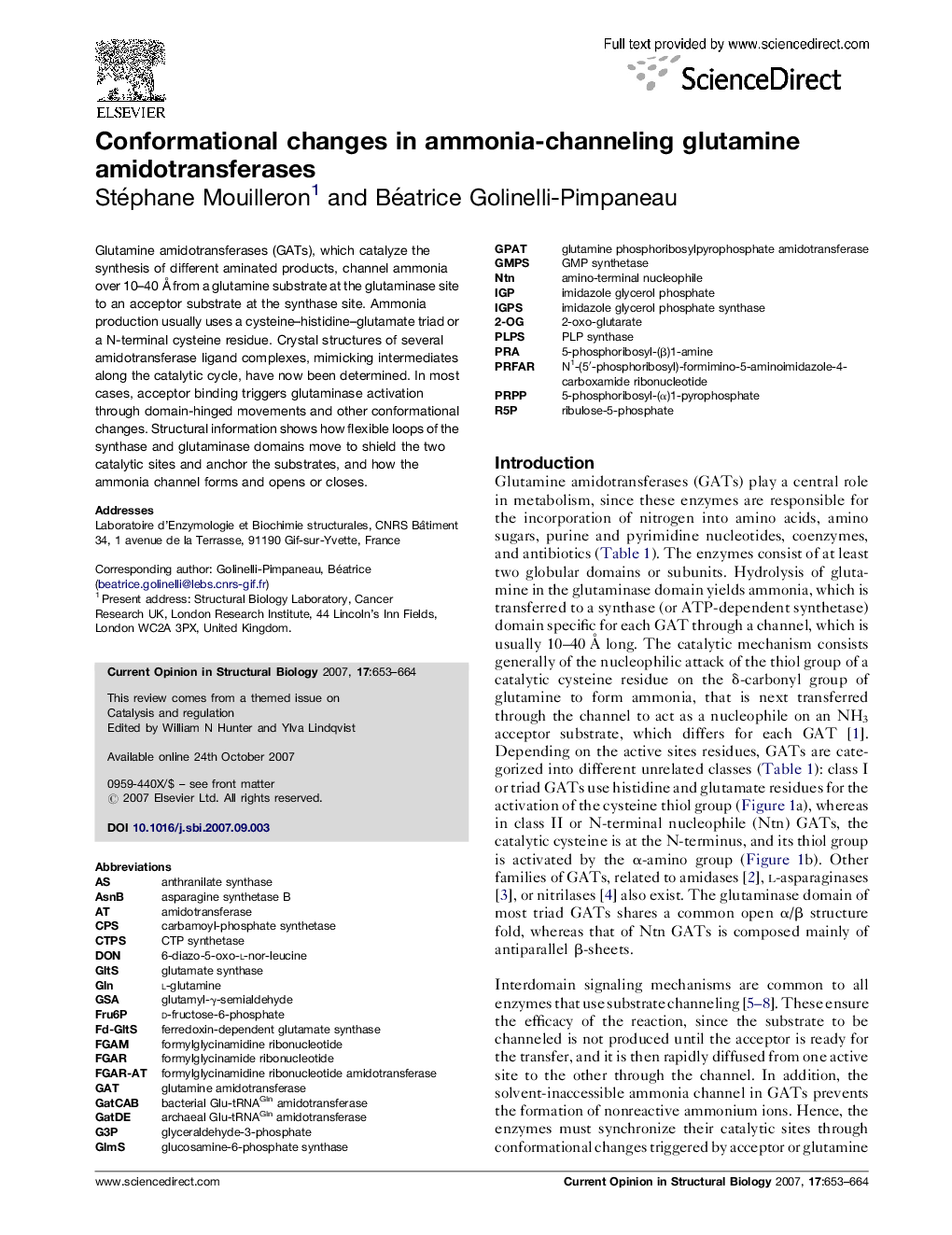| Article ID | Journal | Published Year | Pages | File Type |
|---|---|---|---|---|
| 1979641 | Current Opinion in Structural Biology | 2007 | 12 Pages |
Abstract
Glutamine amidotransferases (GATs), which catalyze the synthesis of different aminated products, channel ammonia over 10-40Â Ã
from a glutamine substrate at the glutaminase site to an acceptor substrate at the synthase site. Ammonia production usually uses a cysteine-histidine-glutamate triad or a N-terminal cysteine residue. Crystal structures of several amidotransferase ligand complexes, mimicking intermediates along the catalytic cycle, have now been determined. In most cases, acceptor binding triggers glutaminase activation through domain-hinged movements and other conformational changes. Structural information shows how flexible loops of the synthase and glutaminase domains move to shield the two catalytic sites and anchor the substrates, and how the ammonia channel forms and opens or closes.
Keywords
GSAPLPSimidazole glycerol phosphate synthaseFru6PGLTsd-fructose-6-phosphateiGPSPRPPGatCABAmidotransferaseIGPFerredoxin-dependent glutamate synthaseGPATGLNcpsG3PGLMsCTPSGATGMPsPRANTNR5P2-OGl-GlutamineDONribulose-5-phosphateAnthranilate synthaseCTP synthetaseglutamate synthaseGlutamine amidotransferaseGlucosamine-6-phosphate synthaseglyceraldehyde-3-phosphate
Related Topics
Life Sciences
Biochemistry, Genetics and Molecular Biology
Biochemistry
Authors
Stéphane Mouilleron, Béatrice Golinelli-Pimpaneau,
